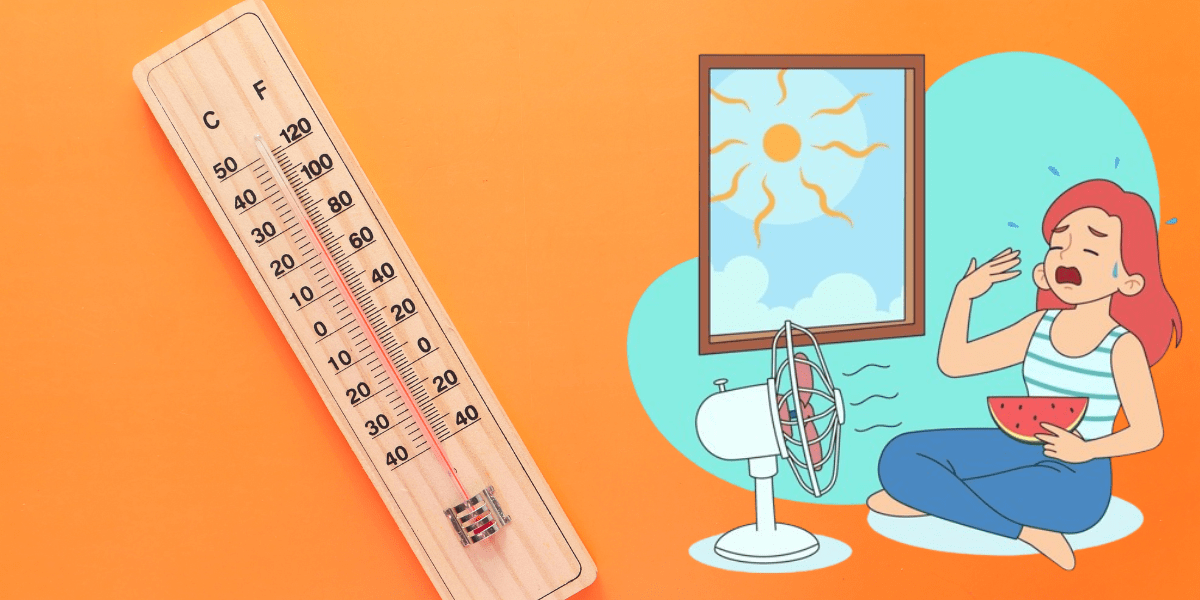Introduction
Heatstroke is a severe and potentially life-threatening condition caused by the body overheating, usually due to prolonged exposure to high temperatures or strenuous physical activity in hot environments. Recognizing the signs, understanding the causes, and knowing how to prevent and treat heatstroke can save lives, especially during hot summer months or in regions with extreme heat.
What is Heatstroke?
Heat-related illnesses can range from mild sunstroke to severe heat stroke. It occurs when the body’s core temperature rises above 104°F (40°C) and the body’s thermoregulation system fails, leading to a rapid increase in temperature. Without prompt treatment, heatstroke can cause damage to vital organs, including the brain, heart, kidneys, and muscles, and may lead to serious complications or death.
Symptoms of Heatstroke
It’s critical to identify heat stroke symptoms in order to act quickly. Key signs include:
- High Body Temperature: A core body temperature of 104°F (40°C) or higher is the hallmark symptom.
- Altered Mental State or Behavior: This includes confusion, agitation, slurred speech, irritability, delirium, seizures, or even coma.
- Nausea and Vomiting: Individuals may experience nausea and vomiting as their condition worsens.
- Flushed Skin: The skin often appears red, hot, and dry, particularly in dry heat. However, it may be moist if the heatstroke was caused by strenuous exercise.
- Rapid Breathing and Heart Rate: Heatstroke often leads to shallow, rapid breathing and a strong, rapid pulse.
- Headache: A throbbing headache may accompany other symptoms.
- Lack of Sweating: In classic heatstroke, the skin may feel dry due to the body’s failure to cool down through sweating.
Causes of Heatstroke
Heatstroke can develop from several factors, including:
- Exposure to High Temperatures: Prolonged exposure to hot, humid weather, particularly during physical exertion, is a primary cause.
- Dehydration: When the body loses too much water and electrolytes, its ability to regulate temperature diminishes, increasing the risk of heatstroke.
- Strenuous Activity: Engaging in intense physical activity in hot weather without adequate hydration or breaks can lead to heatstroke.
- Lack of Acclimatization: Individuals who are not used to hot climates or who experience a sudden increase in temperature are more vulnerable.
- Age and Health Conditions: Infants, the elderly, individuals with chronic health conditions, or those taking certain medications are at higher risk.
Prevention of Heatstroke
Preventing heatstroke requires proactive measures:
- Maintain Your Hydration: Throughout the day, sip on lots of liquids, particularly water. Steer clear of alcohol- and caffeine-containing beverages since these might exacerbate dehydration.
- Avoid Strenuous Activity in Hot Weather: If possible, limit physical activity during the hottest parts of the day, typically between 10 a.m. and 4 p.m.
- Wear Lightweight Clothing: Opt for lightweight, loose-fitting, and light-colored clothing to help your body stay cool.
- Use Sunscreen: Apply sunscreen with a high SPF to prevent sunburn, which can affect your body’s ability to cool down.
- Take Frequent Breaks: If you must be outdoors, take regular breaks in shaded or air-conditioned areas to cool down.
- Acclimate Gradually: If you’re new to a hot climate, gradually increase your exposure to heat over several days.
- Avoid Alcohol and Caffeine: Both can increase the risk of dehydration and heatstroke.
Treatment of Heatstroke
Heatstroke is a medical emergency. Immediate treatment is essential to prevent serious complications:
- Call Emergency Services: If you suspect someone has heat stroke, call 911 or your local emergency number immediately.
- Move to a Cooler Place: Get the affected person to a shaded, cool area or an air-conditioned environment.
- Cool the Body: Remove excess clothing and use cold water, ice packs, or a fan to lower the person’s body temperature. Apply ice packs to the neck, armpits, and groin, places where there are many big blood vessels near the skin.
- Hydrate: If the person is conscious and able to drink, give them cool water or a sports drink. Avoid caffeinated or alcoholic beverages.
- Monitor Vital Signs: Keep a close eye on the person’s condition, checking their breathing, pulse, and level of consciousness until help arrives.
Risks and Complications
Without timely treatment, heatstroke can lead to severe complications, including:
- Organ Damage: Prolonged exposure to high temperatures can cause permanent damage to the brain, heart, kidneys, and muscles.
- Heat Cramps: Painful muscle contractions, usually in the legs, arms, or abdomen, can occur due to loss of electrolytes.
- Heat Exhaustion: A milder form of heat-related illness that can escalate to heatstroke if untreated.
- Death: In severe cases, heatstroke can be fatal, particularly if treatment is delayed.
Conclusion
Heatstroke is a serious illness that has to be treated right away. By understanding the symptoms, causes, prevention strategies, and treatment options, you can protect yourself and others from the dangers of heatstroke. Always stay hydrated, take necessary precautions in hot weather, and seek medical help immediately if you suspect heatstroke.
Frequently Asked Questions (FAQs)
Q: How long does heatstroke last?
A: The recovery time for a heatstroke will vary, depending on how bad it was. Mild cases: Mild cases may get better within a few days, but severe wounds can last for weeks and require hospital care.
Q: Can heat stroke occur indoors?
A: Certainly, heatstroke can also happen inside homes especially in places where there is no proper ventilation or air conditioning.
Q: Heat Stroke — Who Is At Risk?
A: Those over the age of 65, as well as infants six months and younger, those with chronic medical conditions or athletes (especially young children) are at greater risk for heatstroke.
Call to Action:
Stay updated with heat-related illnesses by signing in to our newsletter and book the FREE heatstroke prevention guide Today!


1 thought on “Heatstroke: Understanding, Prevention, and Treatment”
Comments are closed.